SCI-Arc Homelessness Charrette Contextualizes Complexity of the Issue
“We have a lot to cover this afternoon.” said SCI-Arc Director and CEO Hernán Díaz Alonso, addressing the standing-room only crowd of all 506 SCI-Arc students, as well as faculty, staff, civic, and cultural leaders from around Los Angeles and beyond, who gathered earlier this month for SCI-Arc’s unprecedented charrette on homelessness.
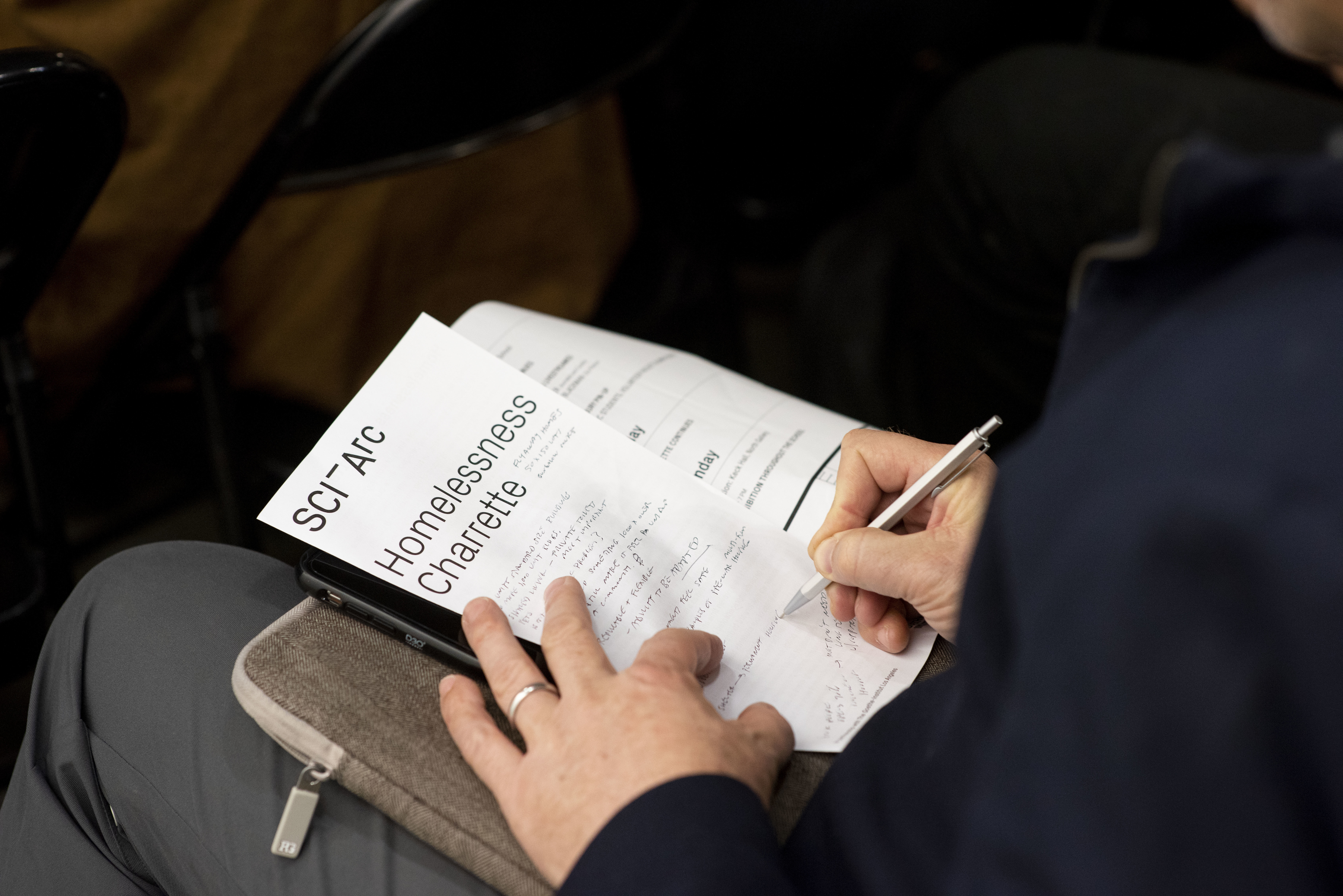
This process of gathering such a broad range of leaders and stakeholders in one place began last year with a meeting at Los Angeles City Hall, with Mayor Eric Garcetti and representatives from schools in Los Angeles. “We were looking, for a long time, for an opportunity to have the whole school work on a particular problem," Díaz Alonso continued, "and we cannot think of an ethically urgent problem more than the issue of homelessness in Los Angeles, which, as we know, is a true emergency”
A charrette is a meeting or gathering of intense and focused design and planning toward a particular problem or goal. Functioning somewhere between a work session and brainstorming session, the charrette tradition typically occurs in a studio environment in response to a deadline or specific project. There are no hierarchies in a charrette—every stakeholder in the project had the opportunity to inform the ultimate vision of the project. By applying this model to socially and politically fraught design issues related to housing and urban planning, SCI-Arc takes further steps to marry the abstract thinking necessary to contemporary architectural discourse with concrete issues affecting contemporary life.
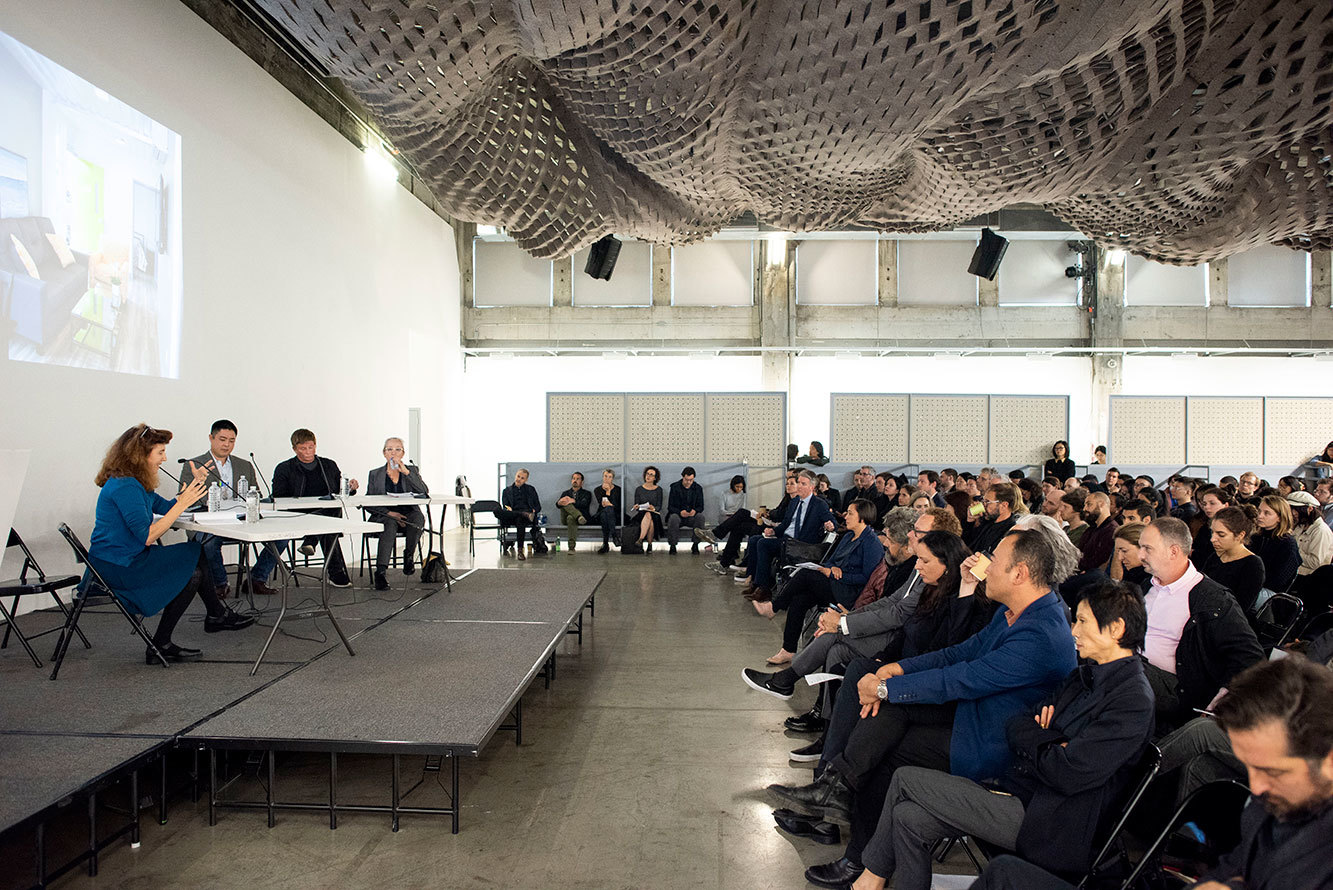
Organized by SCI-Arc Research Coordinator Erik Ghenoiu, in collaboration with The Goethe Institut and the city of Los Angeles, the charrette kicked-off with a series of talks and panels from key figures in the ongoing fight against homelessness, with the goal of framing and contextualizing the complex reality of the issue in order to logistically and intellectually equip the students for the flurry of continuous design and thinking activity that lay ahead. “This challenge is particularly acute for us,” Díaz Alonso said “because as you know, there is a perception of SCI-Arc as a place for speculation and innovation and thinking outside the box. This is a problem that requires all of that, but also to be considered with a huge amount of cruel and tough reality”.
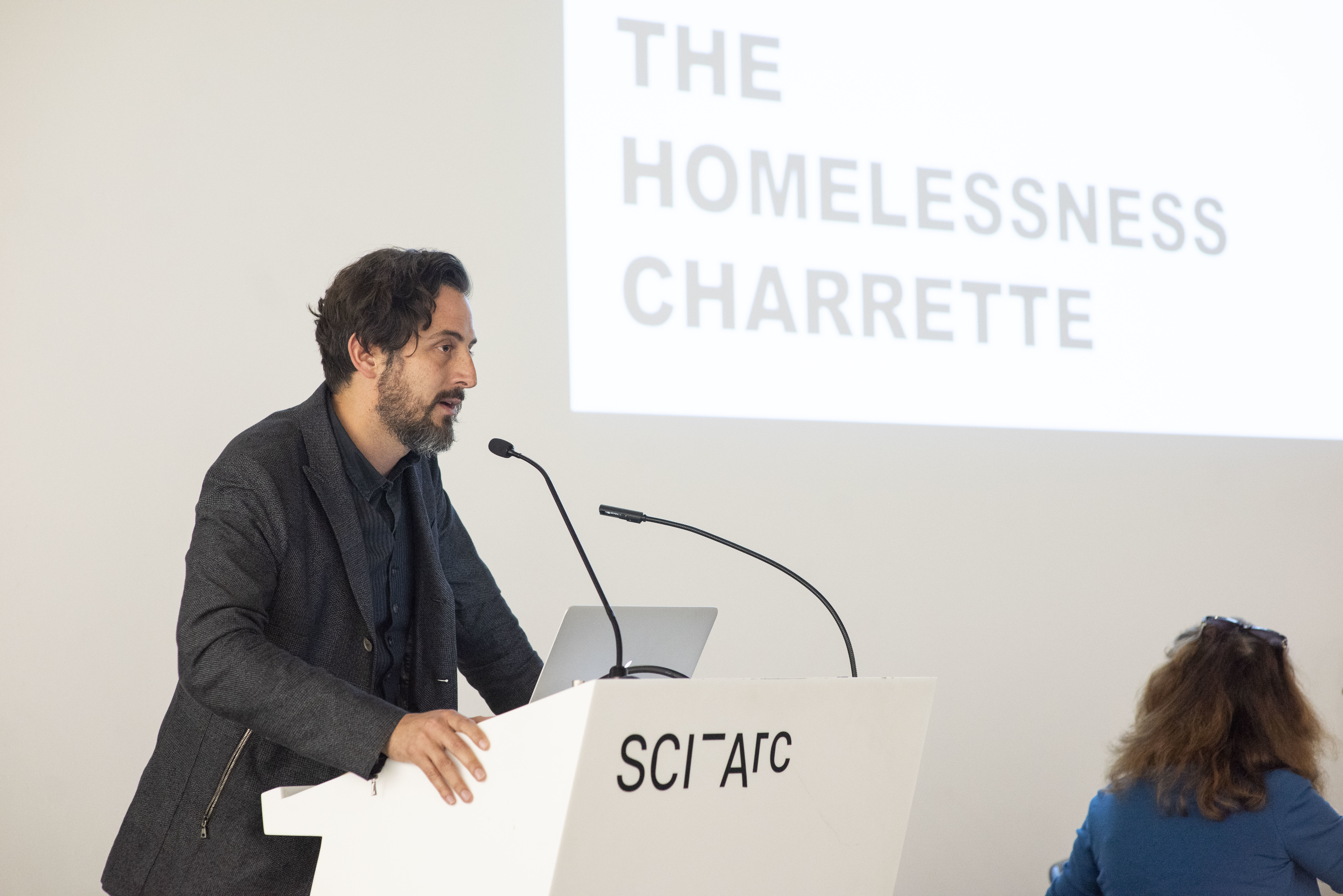
That reality was laid-out in the presentations that followed Thomas’s and Díaz Alonso’s remarks. SCI-Arc Trustee Jerry Neuman, who in his legal work has coordinated and negotiated for myriad infrastructure, and governmental projects around Southern California, and since 2009 has co-chaired The Business Leaders Task Force on Homelessness, a joint venture between The United Way and the LA Chamber of Commerce. In his talk, Neuman outlined how the shift in conversation and discourse around homelessness both clarified and complicated the issue. “The discussion on homelessness was very different ten years ago than it is today... We’ve worked hard to change the discussion from viewing homeless people as transients to viewing them as neighbors, people who live in our communities that remain unseen.” By humanizing the issue before anything, new and different needs and resources can be identified, and most importantly: applied. Homelessness is a housing issue mixed up in many other human rights issues—mental health, domestic violence, generational poverty, veteran issues, and dysfunctional prison and foster care systems, among others. This introduction encouraged students to expand their critical thinking skills, and consider the social impact of the built environment.
Chris Ko, Director of Homeless Initiatives for United Way, brought things back to logistics, presenting not only the statistics on homelessness in LA, but articulating why, when it comes to homelessness, precise statistics are extremely difficult to attain. Even broad numbers like the total homeless population in LA, currently estimated at around 53,000 people, is somewhat fluid when trying to factor in varying definitions of homelessness, such as people living in cars, and people in precarious living situations who dip in and out of homelessness. Although the denizens of Skid Row are neighbors to SCI-Arc, and some of the most visible of the homeless population, Ko surprised the crowd by pointing out that Skid Row makes up less than 8% of the homeless population, which is spread out rather evenly throughout the city. “Thinking about what design means in all kinds of different communities is an important challenge” Ko reiterated.
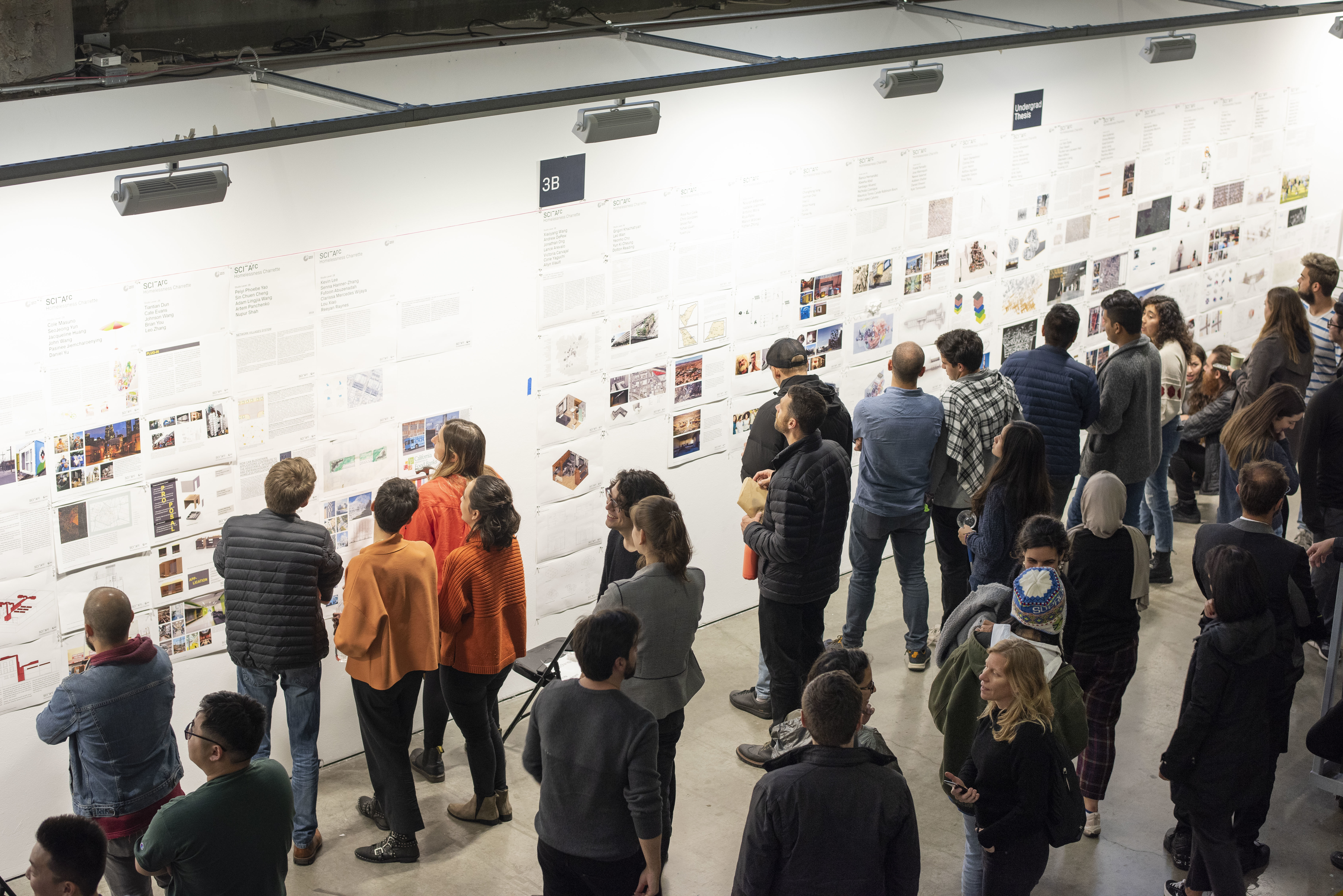
Students and guests were exposed to several talks and panels with key thinkers and leaders in Los Angeles throughout the charrette in order to dive deeper into the ancillary issues surrounding homelessness. All talks and panels are archived on this page.
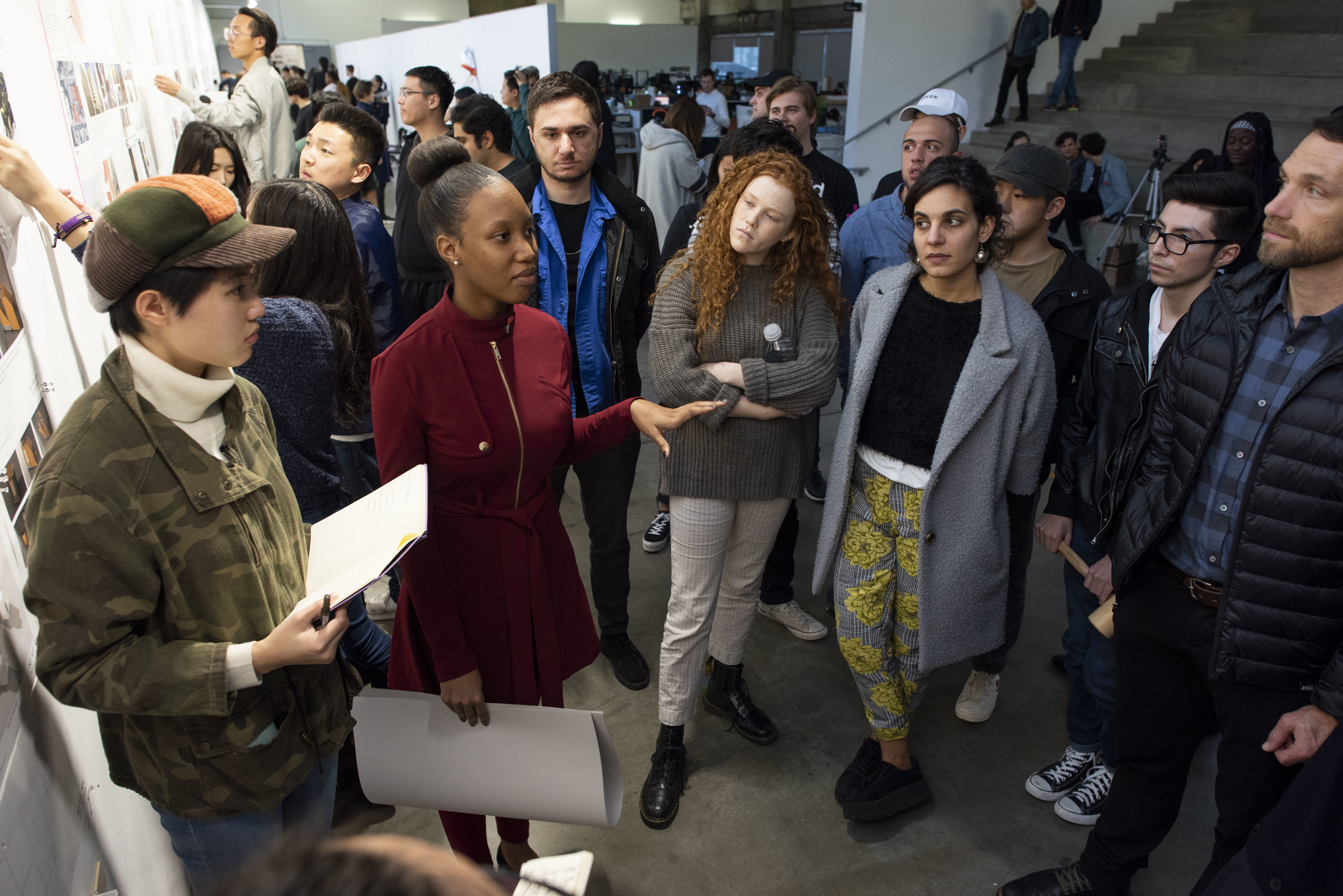
The results of the charrette are exhibited throughout SCI-Arc and select projects will be integrated into a formal report to be presented to the office of the mayor, and made available to the public. View the Report on the Homelessness Charrette.